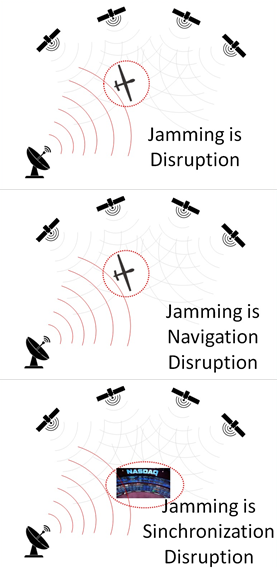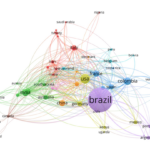By Julliane Silveira, scientific journalist, São José dos Campos, SP, Brazil
Recently, problems were reported in South Korea’s air and naval traffic which were caused by jamming signals from North Korea meant to interfere with the GPS (Global Positioning System).
However, this risk to GPS is not that far from our own reality. The article “GPS-dependent systems: vulnerabilities to electromagnetic attacks”, published in the latest edition (Oct./Dec. 2016) of JATM (Journal of Aerospace Technology and Management), poses questions and identifies situations related to the security and vulnerability of some GPS-based platforms and systems which directly impact the positional awareness of those who rely on them.
“On the Internet, it is easy and cheap to buy an effective jammer that works on GPS radio frequencies”, says Lester Faria, the lead author of the paper and researcher at Brazilian Aeronautical Institute of Technology (ITA). In spite of that, less than 1% of GPS-based platforms have some kind of countermeasure to these risks.
 Outcomes of jamming on general GPS receivers, including cell phone and automotive GPS, indicate that all of them present a high degree of vulnerability to this kind of interference, losing the satellite GPS signal at a fairly low jamming power. The same was shown in more complex systems, such as aeronautical ones, which were jammed and also lost their signals at a relatively low jamming power.
Outcomes of jamming on general GPS receivers, including cell phone and automotive GPS, indicate that all of them present a high degree of vulnerability to this kind of interference, losing the satellite GPS signal at a fairly low jamming power. The same was shown in more complex systems, such as aeronautical ones, which were jammed and also lost their signals at a relatively low jamming power.
To obtain these results, the researchers performed experiments with different general GPS receivers, varying distance and incidence angle, to point out that the receivers fail to work at specific jamming powers. More complex GPS systems were also tested, such as aeronautical receivers, which completely lost tracking at certain distances and jamming powers.
The data was collected and processed by an open source and free software, specially created for this study. Based on the threshold jamming power and the distance at which that power was effective, it was possible to generate 3D graphics which helped in evaluating and estimating the necessary jamming power for very specific targets and flight profiles.
“When I know my vulnerability, I am able to avoid flying in a vulnerable area as shown by the graphic. However, if necessary, I can use a proper countermeasure”, Faria explains.
GPS began as a military project, but is now considered a dual use technology and is widely used in trade, scientific applications, and monitoring and surveillance. From drones and military applications (weapons systems, missiles and projectiles guidance), to financial market and clock synchronization of cell-phones, GPS-based systems are part of everyone´s life.
To read the article, access it
FARIA, L.A., SILVESTRE, C.A.M. and CORREIA, M.A.F. GPS-Dependent Systems: Vulnerabilities to Electromagnetic Attacks. J. Aerosp. Technol. Manag. 2016, vol. 8, n. 4, pp. 423-430. [viewed 25th November 2016]. ISSN: 2175-9146. DOI: 10.5028/jatm.v8i4.632. Available from: http://ref.scielo.org/t89dk4
External link
Journal of Aerospace Technology and Management – JATM: <http://www.scielo.br/jatm>
Como citar este post [ISO 690/2010]:

















Recent Comments